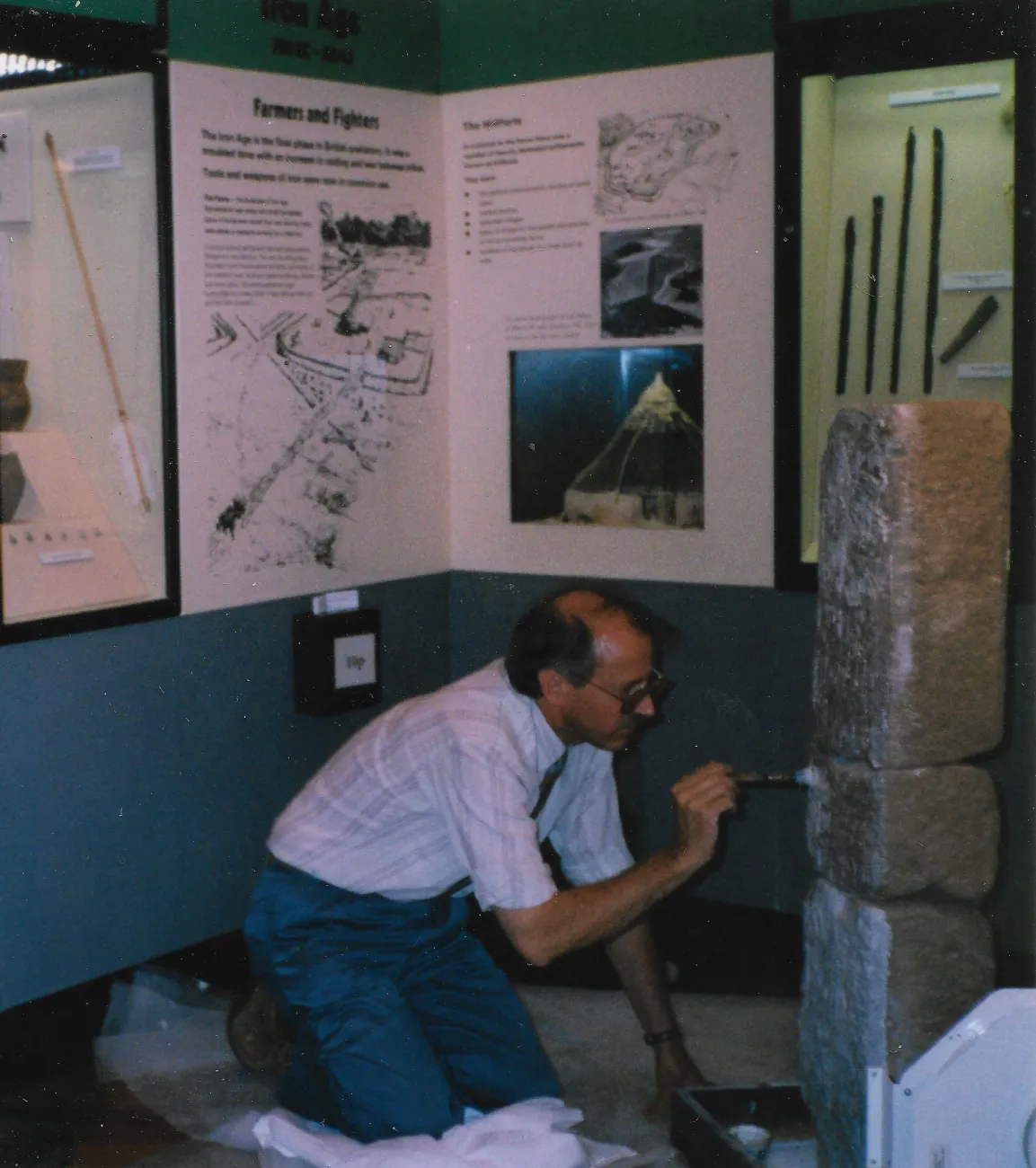Obituary: Graham Morgan ACR, March 1944 – July 2021
Submitted by sharragrow on 11 Jul 2022

By Helen Ganiaris
We had the sad news this past summer that IIC Fellow Dr Graham Morgan died after illness following a stroke in 2017. Graham will be remembered as one of the generation of archaeological conservators at the start of the profession who forged new techniques and ideas and could put his talents and skills to a wide variety of materials and situations.
Most of his career was at the University of Leicester as chief conservator for the archaeology service. He also trained many conservators and archaeologists and developed an expertise in materials analysis. He served as treasurer of the Icon Archaeology Group in its early years and up until his death was chair of the Rugby Archaeological Society.
Gathering tributes from friends and colleagues, what has struck me is not only the range of finds he conserved and his areas of research but also his generosity in sharing his knowledge and skills with students and colleagues. Graham was a strong student in a range of subjects, excelling in natural sciences, and his interest in all things mechanical lasted his entire lifetime. After gaining the Diploma in Conservation at the Institute of Archaeology in London in the early 1960s, he joined the Ministry of Public Buildings and Works working on iconic sites such as Mucking, Rudston Villa and others abroad. He then worked in the conservation lab at the National Museum of Wales before moving on to Leicester in 1974.
During his time there until his retirement in 2009, he conserved finds from local excavations, often of great national importance and complexity. These included lead curse tablets from Vine Street, the Bosworth Boar, the Hallaton hoard and a group of Iron Age cauldrons.
He also had a particular talent for moulding and casting, taking on projects most conservators would find daunting. Right up until his stroke in 2017, he continued conserving finds, some of which will be going on display at the Jewry Wall in Leicester and the British Museum.
In addition, he carried out decades of analysis on Roman mortar and wall plaster. He was persuaded to turn this into a PhD, awarded in 1992, an achievement he was immensely proud of. His thesis and samples comprise the national archive for recipes and materials used in constructing Romano-British buildings.
In 2007, he published A Guide to the Identification and Analysis of Archaeological Artefactual Material. This was beautifully illustrated with photographs, usefully compiling this information in one reference point.
His character and generosity are captured by the following tributes:
“They don’t make conservators like Graham anymore; he had a huge range of practical skills combined with a deep understanding of the materials he was working with. Working with him was a joy. He loved mending things; he could make broken lab kit work again, setting to and making new components if needed. His grandchildren knew he would fix their toys; one of his many projects was a ride-on train set for them in his back garden after he retired.” (Theo Sturge ACR)
“In the late 1970s-80s, Graham was the go-to person for those puzzled about the chemical aspects of conservation. He could always explain the strange phenomenon and advise on what to do. I remember very well how he would calmly provide the vital information with a friendly satisfied smile and a slow blink of his eyes!” (Suzanne Keene, retired conservator)
“Graham was in his dream job! He could continue myriad conservation projects, including mending anything that didn’t work, while also teaching students, in his kind and gentle way, everything from metal-working and wall plaster analysis to the conservation of leather and the identification of charcoal. When teaching small groups, he was in his element and many of us benefited from his knowledge and wisdom over decades. When I finally had to close the Archaeology Certificate Course in 2014, it was Graham who was the longest-serving tutor at nearly forty years!” (Nick Cooper, University of Leicester)
Graham’s wife sadly died of cancer in 1996; he is survived by two daughters—both of whom have followed careers in heritage, Amy as a master embroiderer and Elspeth as a stone conservator—and his five grandsons.
Helen Ganiaris, IIC Fellow, Chair, Icon Archaeology Group
(This obituary first appeared in the December 2021 issue of Icon News p. 13, published by the Institute of Conservation.)
Read the full article in the June-July 2022 "News in Conservation" Issue 90, p. 36-37